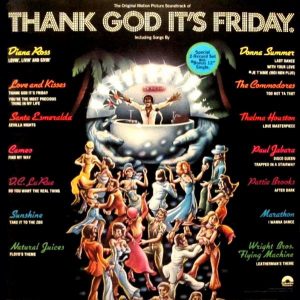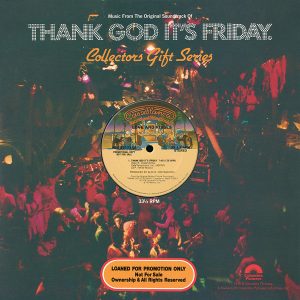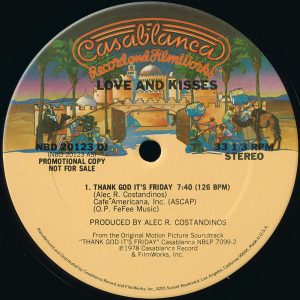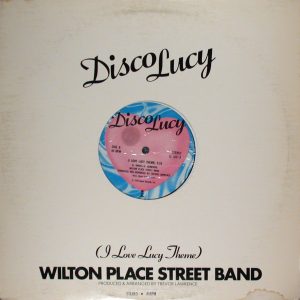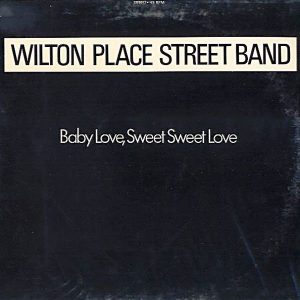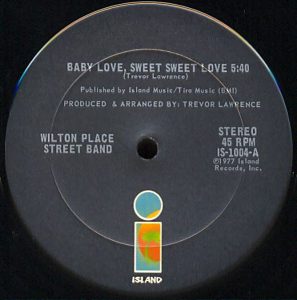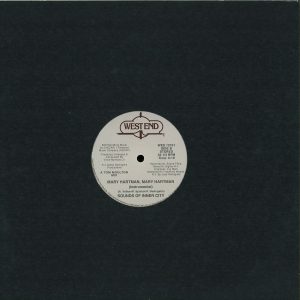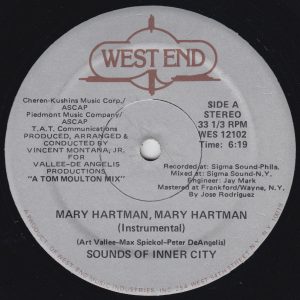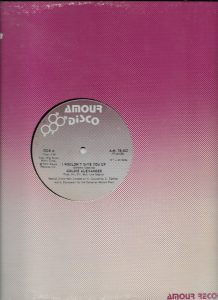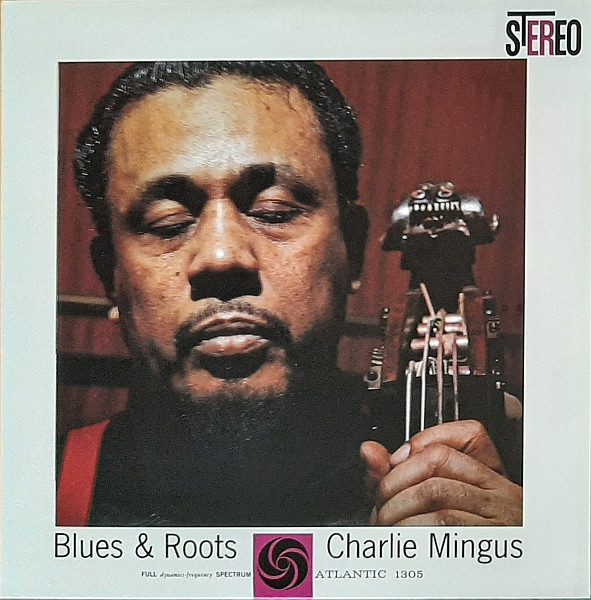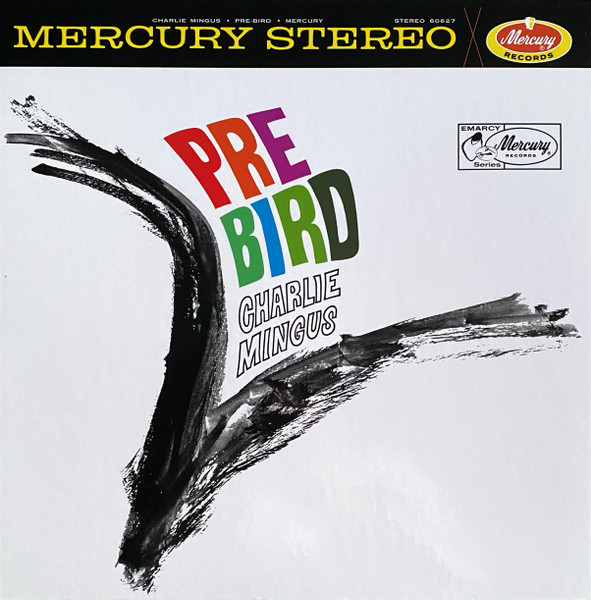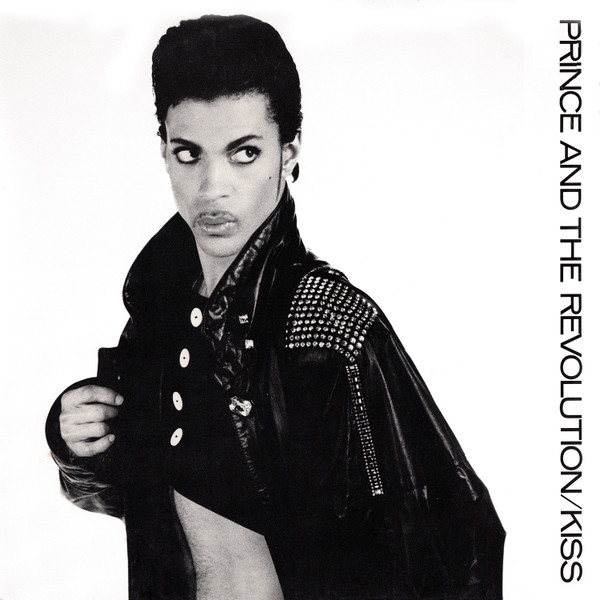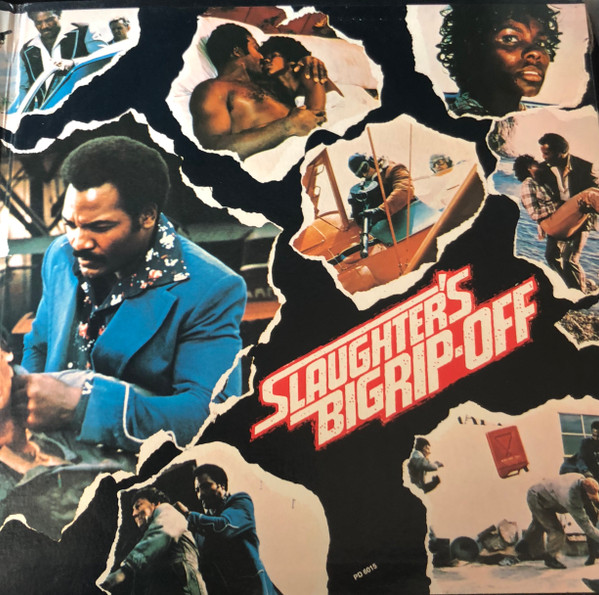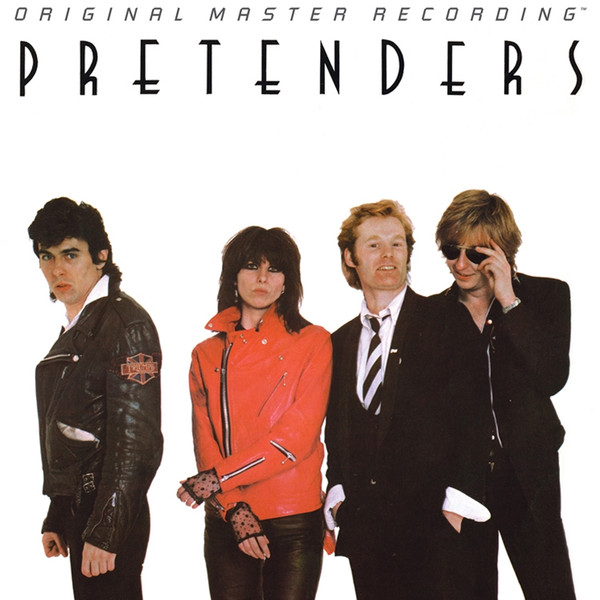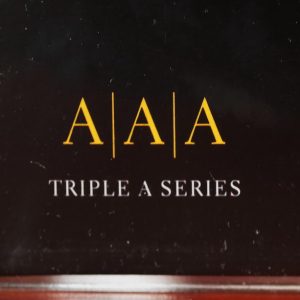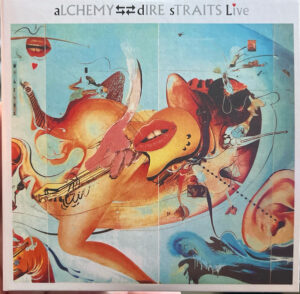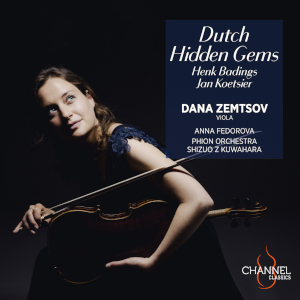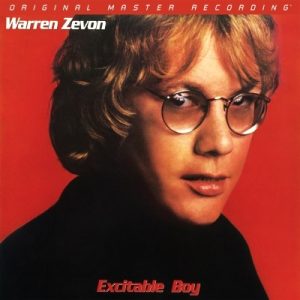This is an ongoing project by Claude Lemaire of Soundevaluations
121. Various, Thank God It's Friday - Collectors Gift Series. Chocolate City – CCD 20014 DJ + Casablanca – NBD 20116, 20117, 20119, 20120, 20121, 20122, 20123, 20124, 20129 DJ (1978), 10x12", 33 1/3 rpm, single-sided, promo, compilation. Genre: disco
Following the immense success of Saturday Night Fever at the box office in December 1977, and the corresponding best selling soundtrack of all time [RSO RS-2-4001, 2658 123], it was no surprise that Casablanca's Neil Bogart would want to jump on the bandwagon at the pinnacle of disco's popularity. Unfortunately for him and all those involved—as well as for the moviegoers—they did not have a John Travolta persona, nor a decent script to excite the masses, resulting in a film fiasco, both financially, and critically. On the other hand, the soundtrack does reunite some significant good songs from what at the time were some of the leading figures in the disco arena. This special set comprising ten single-sided 12-inch singles was released in April 1978 as a promo package for deejays and disco radio stations only, and was very hard to get at the time unless you were well connected. Though I couldn't find it during its initial release—and had to settle for the regular double LP+12" single soundtrack [Casablanca NBLP 7099-3]—I was lucky enough to find it about a decade later in a second hand record store; all ten individually sleeved in absolute Mint condition, and to my great astonishment, most likely never played! Make no mistake there is absolutely no comparison with this promo set vs the regular LP release. First, many of the tracks are much longer, and musically better versions than the regular release, and secondly the superior sound of the maxi-single simply crushes the regular LP compilation, which like many soundtracks, lacks in frequency extension, and dynamics—and obviously would not merit a place in this List. Of particular interest here are the alternate extended mixes of two noteworthy tracks: Donna Summer's "With Your Love" [NBD 20117], and—Alec R. Costandinos-produced—Love and Kisses' "Thank God It's Friday" [NBD 20123]; which are nearly twice the duration with totally different mixes that comprise superb breaks, and instrumental parts not found on the shorter versions, allowing not only better appreciation of the song structures, and arrangements but also much better mixing possibilities with other songs. If you prefer the latter's shorter LP version but with better sound, you should go with the 12-inch 45rpm UK single [Casablanca TGIFL 1] which sounds rather tight with clean detailed highs. As with any compilation comprising multiple studio locations and personnel, there are slight variations in sound quality, and tonal balance between bands. Love and Kisses, and Summer's songs—including "Last Dance" [NBD 20122]—come out on top with punchy, articulate, kick and bass, accompanied by just the right amount of treble detail, and vocal level; while Pattie Brooks' "After Dark" [NBD 20116] for example, lacks a bit of bottom but still impresses in all other aspects. D.C. La Rue's slow-tempo "Do You Want the Real Thing" [NBD 20124], and Paul Jabara's "Disco Queen" [NBD 20129] also boast much longer versions with several breaks.
122. Wilton Place Street Band, "Disco Lucy (I Love Lucy Theme")/"You Don't Even Know Who We Are." Island Records – IS 1001 (1976), 12", 45 rpm. Genre: disco, mild ballroom - big band leanings.
While for many, and depending on age, "Disco Lucy" will recall Lucille Ball and Desi Arnaz's iconic 1950s sitcom; my first memories of it rather teleport me back to Dick Clark's American Bandstand music and dance program airing on Saturdays which frequently spun this song in late 1976 to early 1977, I can still see the dancing partners famously doing the hustle on the dancefloor during the recurring "Rate-a-Record" segment. Mostly instrumental, the energetic disco track—borrowed from the old "I Love Lucy Theme" composed by Eliot Daniel and Harold Adamson—was arranged, and produced by saxophonist, and songwriter Trevor Lawrence, with his wife Lynda Laurence aka Lynda Tucker contributing the sparse vocals. The intro has a rapid-fire panned electric guitar lick, followed by brass blowing in a call and response panned pattern, exploding in the "Let's Dance!" exaltation, and resulting in the rich orchestral string climax. The brass, and "Dance Disco Lucy" chorus alternate, and a few percussive breaks are thrown in for good measure before a grandiose movie style finale. Sonically, everything is perfect: great warm, full saturated tonal balance, brassy present horns, solid punchy drum, groovy weighty bass, superb non-distorted cutting capturing the excitement of the studio performance. Side B is a short quirky track that lacks musical creativity but kind of makes it up with superb sound. This just happens to be Island's first 12-inch release. I did not have the original US pressing so all my comments are based on my first press Canadian copy [Island IS 1001] cut at The Mastering Lab in Hollywood, California which probably used the same stamper.
123. Wilton Place Street Band, "Baby Love, Sweet Sweet Love"/"Gonna Have a Party." Island Records – IS 1004 (1977), 12", 45 rpm. Genre: disco.
This was the band's second, and final release, and is composed, arranged, and produced once more by Trevor Lawrence in a very similar fashion to their first single described in the previous entry, though with greater singing contribution, and the grand finale replaced by a quick fade-out. Side B's "Gonna Have a Party" was not a hit but remains fairly good and worth a listen. The sound on both sides is as awesome as their debut, and all those sonic comments apply exactly here also. In a nutshell, if you liked their first release, you are most likely to appreciate this one to the same degree. Needless to say, the two tracks can be intermixed quite easily. This one also has the "TML-S" dead wax inscription, meaning cut from the slave lathe.
124. Sounds of Inner City, "Mary Hartman, Mary Hartman" (instrumental)/"Mary Hartman, Mary Hartman" (vocal). West End Records – WES 12102 (1976), 12", 33 1/3 rpm. Genre: disco, Philly soul, funky touches.
Around the same time period as above, and also inspired by television theme songs—though in this instance in a more contemporaneous setting—Sounds of Inner City had their take on the Norman Lear produced satirical soap opera Mary Hartman, Mary Hartman, originally airing in 1976-77. It was one of at least three disco flavored versions of the series' main theme, and the only one worth investigating—the other two coming from The Deadly Nightshade [Phantom Records BPL1-1370] in 1976, and The New Marketts the following year [Festival CALS 9001], both bland musically speaking. Produced, arranged, and conducted by vibraphonist Vincent Montana, Jr.—well known for his work with M.F.S.B. and The Salsoul Orchestra—it could easily be mistaken for the latter so much is the resemblance in style, and most probably are them in disguise. In fact, the song is similar in structure to "Salsoul Hustle" from their debut LP the year before [Salsoul Records SZS 5501]. Engineer Jay Mark recorded the track at Sigma Sound Studios in Philadelphia while Tom Moulton mixed it at Sigma Sound Studios in New York. José Rodriguez mastered it at Frankford/Wayne Matering Labs in New York. As is often the case, Moulton and Rodriguez teamed up to cut the lacquer. The instrumental is almost double the length of the vocal version, and is probably why they put it on side A instead of the usual side B, whereas the vocals normally occupy the first side of a single. In concert with the aforementioned "Disco Lucy," the intro opens with a clean electric guitar riff augmented by short fast echo effects with hi-hat hitting the 2 and 4 beats. Bass and strings follow, and sparse repeated choruses come and go a few times along the way. The arrangements are lush with the vibraphone and strings lending a chic loungy atmosphere, interspersed with brief brass bursts. The sound is fat, very warm with generous bass, and with what appears to be slight analog tape compression close to mild saturation, and some minor smearing in the highs. Nevertheless on a good full range system it provides a pleasant, classy, funky, soulful discothèque sound and vibe.
125. Goldie Alexander, "I Wouldn't Give You Up." Amour Records – A.M. 18,402 (Can.) (1977), 12", 45 rpm. Genre: disco.
Originally sung and written by Barbara Gaskins aka Barbara Roy as part of the soulful disco act Ecstasy, Passion & Pain back in 1974 [Roulette SR-3013]. Here, Canadian-born singer Goldie Alexander brings his touch to this twelve-inch single on Québec disco label Amour Records founded by Gilles Gravel. Robert Lee Gagnon produced, arranged, and directed this deeper disco-fied cover. George Cucuzella, Dominique Zgarka, and Scott Dockswell created the "special disco mix" which relies on a synth-bass riff run, resembling T. Connection's "Do What You Wanna Do" [T.K. Disco 24], and more so, Celi Bee & the Buzzy Bunch's "Superman" [T.K. Disco 37]—the latter making for a good mix in a club setting. Cucuzella—the Limelight's very first deejay in 1973, soon formed the Canadian Record Pool providing special mixes and re-edits to deejays shaping the flourishing disco scene, as well as an importer/exporter through Downstairs Records in Montreal—he would soon establish Canada's premier disco and dance music label, Unidisc Records around 1977-78. The exact same instrumental tracks served also as the backing for Chatelaine's french version [Amour Records AM 18,407] with "Corps à Corps (Avec Toi)" on side B. The sound is full, warm, with meaty bass, smooth mids and treble—perfect for discothèque and club sound levels, and domestically also if one wishes to crank the volume. The lacquer was cut by José Rodriguez—well known for his work with Tom Moulton and many Philly soul releases—and at under six minutes, there was plenty of non-compressed groove space available for a hot clean cut.
For more from Claude Lemaire go to his blog...
http://soundevaluations.blogspot.ca/




